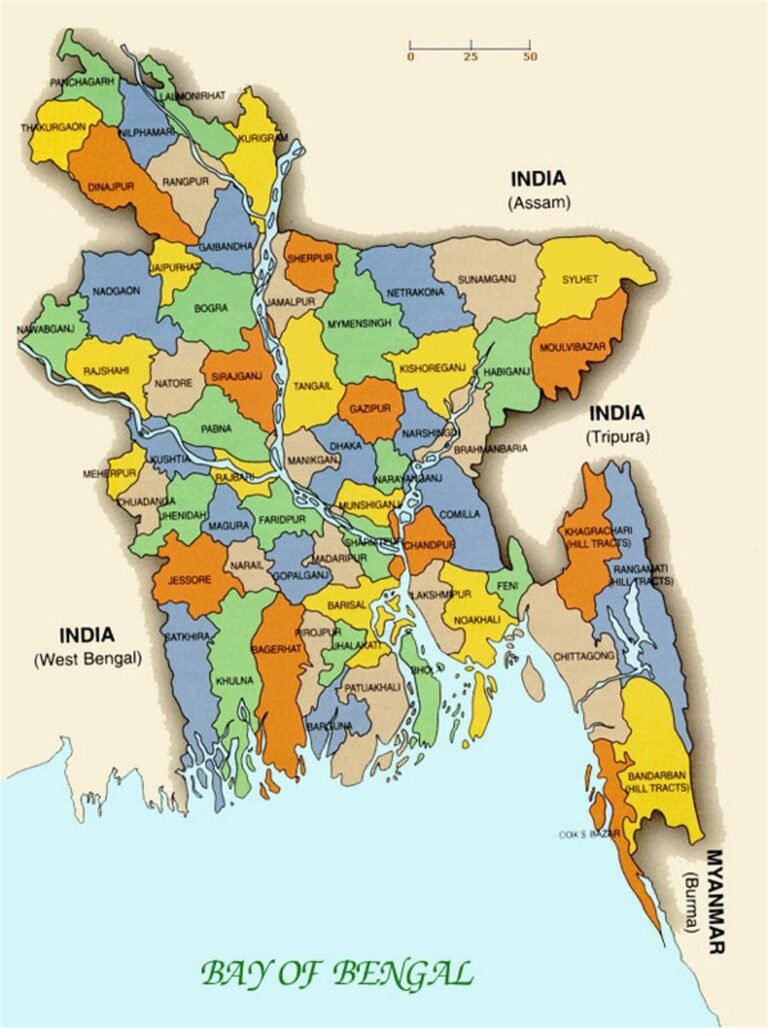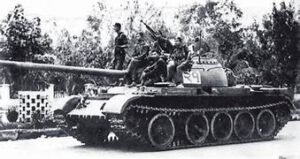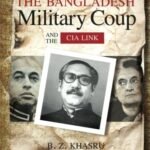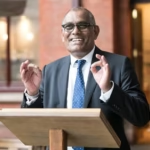Introduction
Since its independence in 1971, Bangladesh has repeatedly experienced acute political turbulence: assassinations, palace intrigues, short-lived governments, military interventions, mutinies and counter-mutinies. The period from 1975 to 2007 is particularly intense. The first half of the period (1975–1982) saw a cascade of violent seizures and counter-seizures that reshaped the state and blurred the civil-military boundary. The later episodes — including an attempted military intervention in 1996 and a military-backed caretaker administration in 2007 — show the continued role of the armed forces as a pivotal political actor. This essay traces these events in sequence, highlights lesser-known or “small” attempts, and tries to place them in political and institutional perspective.
The Breach: August 1975 and its Aftermath
The political ruptures began with the watershed assassination of Sheikh Mujibur Rahman on 15 August 1975. A faction of mid-ranking army officers stormed the president’s Dhanmondi residence and murdered Bangabandhu Sheikh Mujibur Rahman, along with most of his close family. The coup threw the country into immediate and chaotic political reordering: Khondaker Mostaq Ahmad briefly became president, and the constitutional and legal protections around civilian rule rapidly eroded. This single violent act created a cascade of revenge, counter-plots, jail killings and further coups across the rest of 1975. The assassination and the political disorder that followed constitute the proximate context for the multiple small and large coup attempts that followed that year. Wikipedia
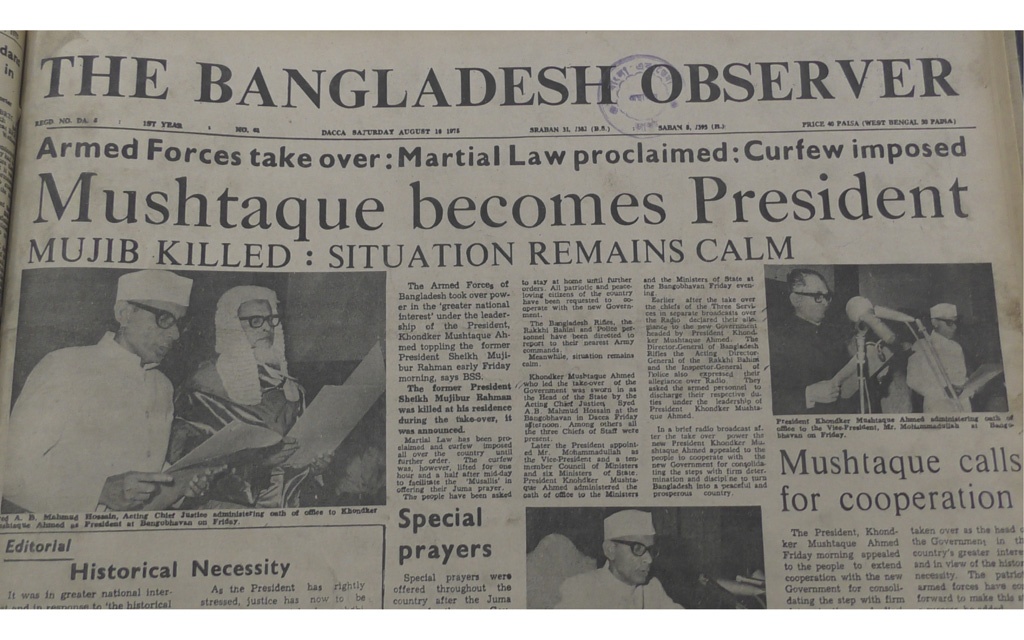
The “Jail Killings” (3 November 1975)
On 3 November 1975—less than three months after Mujib’s assassination—four imprisoned senior Awami League leaders (Syed Nazrul Islam, Tajuddin Ahmad, Mansur Ali and A.H.M. Qamaruzzaman) were murdered inside Dhaka Central Jail. The killings are commonly called the “Jail Killings” and are widely considered part of the political settling of accounts among coup factions. The incident was intimately tied to the immediate machinations within the officer corps and to efforts to prevent restoration of Mujibist power. The jail killings hardened divisions inside the military and among civilian elites, and set the scene for the November counter-interventions. Wikipedia+1
November 1975 — Two Coups in One Month (3 November and 7 November)
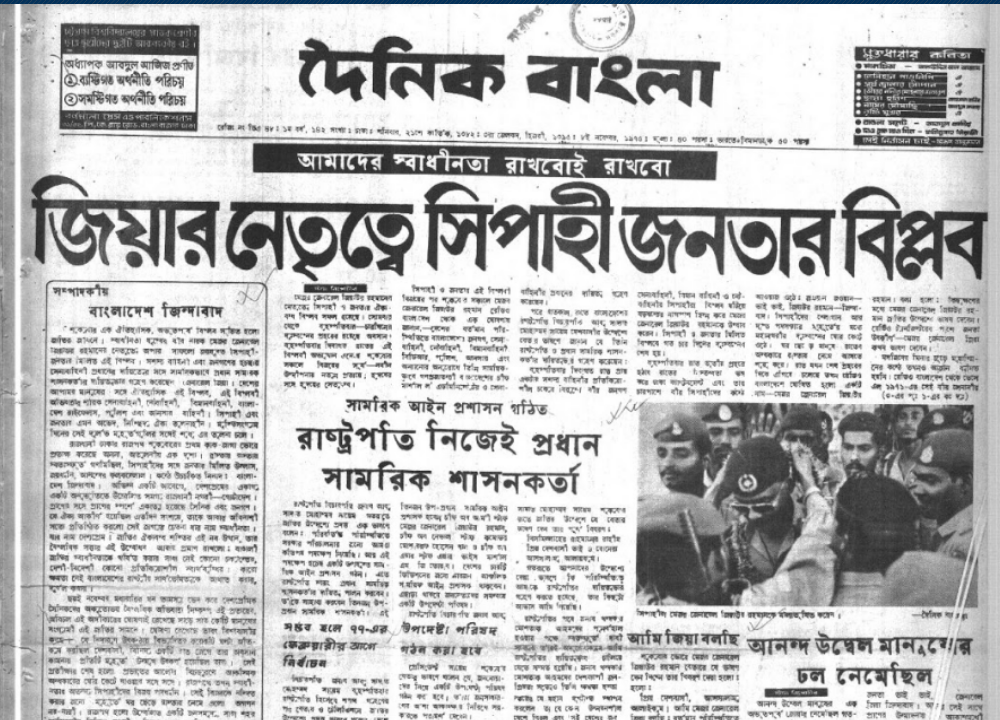
The months following August 1975 saw both a further concentration of power and a near-free-for-all within the armed forces.
3 November 1975 (Khaled Mosharraf’s counter-coup)
On 3 November 1975, Brigadier Khaled Mosharraf (a senior army officer who had been active in the liberation period) led a coup to remove Khondaker Mostaq Ahmad’s regime and the officers implicated in Mujib’s assassination. Mosharraf intended to restore the chain of command and to punish those responsible for the August killings. While this operation temporarily ousted some of the August conspirators, it did not create lasting stability; instead, it triggered a furious response from other factions. The 3 November move is often interpreted as an attempt by the professional officer corps to reassert institutional order — but it also deepened factionalism and set in motion the chain of events that led to the 7 November uprising. Wikipedia
7 November 1975 (The “Sipahi–Janata” uprising and Abu Taher)
Only days later, on 7 November 1975, a different force entered the scene: an uprising that involved enlisted men and elements inspired by leftist civilians and political groups (notably the Biplobi Shainik Sangstha, associated with the Jatiya Samajtantrik Dal). The 7 November mutiny freed Major General (later President) Ziaur Rahman from house arrest, led to the murder of Khaled Mosharraf and several other officers, and briefly empowered the left-leaning BSS movement before the army hierarchy reasserted control. The 7 November events — sometimes called the “Sipahi-Janata” (soldiers and people) revolution — were a pivotal escalation in 1975’s violence and led directly to Ziaur Rahman’s consolidation of power in the months that followed. Abu Taher, a charismatic but controversial figure, was later arrested, tried by a military tribunal and executed. The twin 3 and 7 November episodes made clear that the breakdown was not only a rivalry of generals but involved rank-and-file soldiers and organised leftist activists, altering the class and ideological contours of the conflict. Wikipedia+1
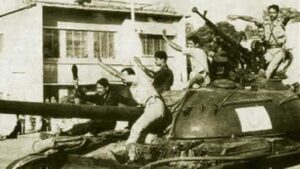
The Late 1970s: Mutinies, Courts-Martial, Purges (1976–1979)
The late 1970s were marked by ongoing turbulence. After Ziaur Rahman emerged as the dominant figure, attempts to dislodge him continued. A notable episode was the 1977 Bangladesh Air Force mutiny, an attempted revolt led by airmen and some army signal corps members. The Air Force mutiny was a serious breach: it involved attacks on senior officers and threatened Dhaka’s air operations before being suppressed. The government reaction was severe: courts-martial, mass arrests and executions followed, and the armed forces were purged of suspected leftist and mutinous elements. These purges reshaped the institution and raised the stakes for any future conspirators; they also hardened Zia’s image as a ruler who would use brutal force against internal dissent. Wikipedia+1
Between November 1975 and 1979, the Zia administration reported that numerous attempted coups and mutinies were foiled; academic and foreign archival sources indicate multiple smaller conspiracies, plots and localised outbreaks of violence during these years. The pattern was one of repeated attempts and increasingly draconian responses: mass courts-martial, executions, imprisonments, and reorganisation of the chain of command to reduce the autonomy of battalion commanders.
1981: The Chittagong Circuit House Attack and the Assassination of Ziaur Rahman
On 30 May 1981, President Ziaur Rahman was shot dead in an attack at the Circuit House (a government guest house) in Chittagong. The attack was mounted by a small number of army officers who had gathered at the Circuit House; they were nominally part of the Bangladesh Army but acted as a factionary insurgent group. Ziaur Rahman’s assassination was a dramatic reversal: a military chief who had himself emerged from the post-1975 whirlwind was killed in the field while attempting to mediate a local political dispute. The killing once again plunged the state into shock and prompted emergency responses to prevent further fragmentation of the armed forces. The episode underlined how small groups of motivated officers could still alter the national trajectory, particularly when they could seize a symbolic target such as the president’s residence. Wikipedia

The Chittagong incident merits two observations. First, it shows that the 1970s’ institutional instability had not been resolved by forceful suppression; second, although the mutineers succeeded in killing Zia, the broader army did not fracture into civil war — the chain of command, aided by senior officers and political manoeuvring, contained the shock and reconstituted a new leadership. Nonetheless, the assassination cleared the ground for further military influence and, soon after, a change in regime via another general: Hussain Muhammad Ershad’s 1982 coup would top Zia’s civilian successor only months later.
1982 and After: Ershad and the Consolidation of Military Rule
While your primary focus was up to 2007, it is necessary to mention the relatively bloodless 1982 coup led by Army Chief Lt. Gen. Hussain Muhammad Ershad. On 24 March 1982, Ershad seized power from President Abdus Sattar and imposed martial law; he would remain a dominant figure (and eventually President) through most of the 1980s. His rule is often described as more institutionalised than the chaotic sequence of 1975–1981: Ershad tried to fuse bureaucracy, military structures and a presidential executive to provide a more durable framework. Yet coups and attempted coups had already embedded the expectation that the military could and would intercede when political authority faltered.
The 1990s: Democratisation and the 1996 Attempt
The 1990s witnessed the restoration of (electoral) civilian rule in Bangladesh after the popular uprising that removed Ershad in 1990. Elected civilian governments alternated between the Awami League and the Bangladesh Nationalist Party (BNP). For most of the decade, the direct involvement of the military in public administration was less pronounced. Still, the armed forces remained a latent political actor: the underlying grievances and the institutional patterns from previous decades persisted.
In May 1996, a high-profile case reaffirmed these latent tensions. The Army Chief of Staff, Lieutenant General Abu Saleh Mohammad Nasim, was involved in an abortive attempt to challenge the civilian presidency. The confrontation arose when President Abdur Rahman Biswas ordered the retirement of two senior officers whom he suspected of political activity. Nasim refused the directive, and the President sought his dismissal. Nasim apparently tried to mobilise units in the capital. The attempt failed quickl,y and Nasim was dismissed. The episode revealed that even during the period of formal civilian governance, the prospect of a military intervention — however short and poorly organised — remained a political contingency that elites and publics had to reckon with. Wikipedia+1
The 2006–2008 Political Crisis and the “1/11” Military-Backed Caretaker Administration (2007)
The episode often described as a “coup” in early 2007 is more complicated than a classical military takeover. In late 2006, Bangladesh’s partisan politics were mired in escalating confrontation between the main political parties, and the scheduled parliamentary elections became contested. On 11 January 2007, a state of emergency was declared, and President Iajuddin Ahmed resigned (as Chief Adviser of the caretaker government); within days, with evident military backing, former central bank governor Fakhruddin Ahmed was sworn in as Chief Adviser to head a technocratic caretaker government. The period is frequently described as the “1/11” episode (11 January), and though the military did not formally assume the presidency, the army’s role in orchestrating the arrival of a non-partisan caretaker with extraordinary powers was unmistakable. Human rights organisations and international observers characterised the administration as “military-backed,” and the government carried out a sweeping anti-corruption drive, detentions of politicians, and a postponement of elections until December 2008. The events revitalised debates about the military’s role in governance: was this a stabilising intervention to restore order or an unconstitutional usurpation of democratic processes? Most analysts agreed it had the appearance of a coup by other means — the military as kingmaker behind a technocratic façade. Wikipedia+2The Economist+2
Patterns and Explanations: Why So Many Attempts?
Across these episodes, a few underlying patterns emerge:
-
Weak Institutionalisation of Civilian Control. Newly independent states often take time to build stable civilian oversight over the military. In Bangladesh, the violent and politicised origins of the army (fighting a liberation war, then playing kingmaker) complicated the evolution of strict civilian supremacy. When civilian authority appeared weak or delegated (e.g., caretaker arrangements), officers sometimes felt empowered to intervene.
-
Factionalization within the Officer Corps. The Bangladesh Army was never ideologically homogenous. Divisions existed along lines of rank, revolutionary credentials (freedom-fighter status), personal patronage, and ideology (leftist vs. conservative). Those cleavages created networks that could be activated into mutiny.
-
Tactical Use of Lower Ranks. The 7 November 1975 uprising famously involved enlisted men as actors in national politics. Subsequent purges and attempts to cultivate enlisted loyalty (through pay rises or political payloads) showed how lower ranks could be mobilised to shift outcomes rapidly.
-
Countervailing Structures (Courts-Martial, Purges, Promotions). Each wave of coups produced a counter-reaction: courts-martial, executions, forced retirements, reorganisation of units, and targeted promotions. Those institutional responses hardened the army’s control mechanisms but also created resentments that could resurface.
-
Civilian Political Dysfunction. The weaker and more polarised the civilian political class became, the more space the military perceived for intervention — whether directly (takeover) or indirectly (installation of a caretaker government).
-
International Context and Signals. Regional and international attitudes (both tacit and explicit) influenced the shape of interventions. Whether the junta faced sanctions, diplomatic isolation, or cautious engagement shaped how long and how openly the military remained in the background.
The “Small” or Failed Attempts: Why They Matter
Scholars sometimes focus on significant successful coups, but the smaller, unsuccessful or quickly suppressed attempts (3 November 1975, various 1975–1981 episodes, the 1977 Air Force mutiny, and the 1996 Nasim episode) are crucial for three reasons:
-
They reveal the fault lines. More minor mutinies expose which units or commanders are dissatisfied. They show patterns of grievance and capability that may later be fused into larger events.
-
They shape subsequent institutional reform and repression. A failed attempt invites purges and courts-martial that reshape the army’s social composition and doctrine.
-
They leave unresolved narratives and grievances that reemerge politically. Executions, summary trials, and unresolved criminal accountability (e.g., delayed trials for the 1975 assassins) left scars on the polity that continued to inform political mobilisation long afterwards.
The 3 and 7 November 1975 episodes are canonical examples: they were “small” in duration but massive in structural consequence, producing executions, radical reorganisations, and paving the way to the Zia era. The 1977 Air Force mutiny and 1996 Nasim episode illustrate that even specialised sub-services (air force, signals) or a single army chief can be the spark for an attempted takeover.
Human Costs, Memory and Justice
The human cost of these interventions is stark. Executions, disappearances, political imprisonment and the violent deaths of leaders and officers scarred families and national memory. In many cases, accountability was delayed or politicised: indemnities, amnesties, and manipulated trials meant that justice was contingent on which political party returned to power. The delayed trials about the 1975 killings and the later executions of some convicted participants illustrate how the legal process in Bangladesh became another battlefield for political legitimacy.
Memory politics are central: collective commemorations (e.g., National Mourning Day for Mujib) and the annual observance of 7 November by some political communities demonstrate how coups have been incorporated into partisan narratives. The selective remembrance and instrumental use of history continue to shape how Bangladeshis understand the legitimacy of past and present governments.
Institutional Legacies to 2007 and Beyond
By 2007, Bangladesh had accumulated four critical institutional legacies from the coup decades:
-
A professionalised but politicised officer corps. Training and capabilities grew, but so did a habit of political intervention.
-
A propensity for “guardian” intervention. Even when not seizing power directly, the army often behaved as a latent arbiter of political disputes (as in 2007).
-
A contested civilian political arena. Weak bargaining between parties and polarisation created recurrent crises that could invite the army’s “help.”
-
Legal and memory debts. Unresolved crimes from the 1970s and 1980s kept the past alive as a source of grievance and legitimation.
These legacies meant that while outright military coups decreased in frequency after 1990, the possibility of a backdoor takeover — the military shaping outcomes behind a civilian facade — remained potent and was precisely what happened in 2007.
Evaluating the 2007 Case: Coup, Intervention, or Corrective?
Scholars and observers differ over terminology for 2007. Some call it a coup because the military was the decisive actor, removing elected political processes and installing a technocratic Council. Others say it was an intervention to stabilise Bangladesh and prevent widely feared violent elections. The correct description depends on which dimension one emphasises: constitutional form (no formal military presidency) or de facto control (the army as kingmaker, with active involvement in political arrests and shaping the government). International human rights groups and many foreign observers described the period as a military-backed caretaker government. Either way, the event reveals the institutional fact that by the 2000s, the military had become proficient in both indirect and direct interventions. Wikipedia+1
Conclusion: Recurrent Themes and a Cautious Outlook
An overarching conclusion from the 1975–2007 record is that military interventions in Bangladesh were seldom one-off aberrations; they were embedded in institutional path dependencies. The violent ruptures of 1975 created a template — factionalism, purges, retribution, and eventual consolidation — that shaped subsequent decades. Even when civilian rule returned and elections took place, the shadow of military capacity and the norm that force could be used when politics failed remained.
For students of civil-military relations, the Bangladesh case offers at least three lessons:
-
Entrenched violence begets institutionalised suspicion. When political actors use immunity, indemnity and politicised pardons, it rewires incentives in the officer corps.
-
Small mutinies matter. They are early warning sign,s and they produce institutional reforms and repressions that have long-term consequences.
-
Indirect control can be as consequential as direct takeovers. By the early 21st century, Bangladesh showed that a military could wield decisive influence without the theatrical trappings of a formal coup.
Bangladesh’s later history (after 2007) continues to evolve; debates about democratic consolidation, the role of the security services, and transitional justice for the 1970s killings remain central. What is clear from the arc between 1975 and 2007 is that the gun has been — repeatedly — both instrument and arbiter of politics. Understanding the small, failed attempts alongside the headline coups is therefore essential to grasp the full political logic of intervention in Bangladesh.
Select Bibliography and Further Reading
(Primary sources and major secondary works used to support the narrative. Key web sources cited inline; books/articles listed for deeper research.)
Web / archival sources (cited above)
-
“Assassination of Sheikh Mujibur Rahman.” Wikipedia. Wikipedia
-
“3 November 1975 Bangladeshi coup d’état.” Wikipedia. Wikipedia
-
“7 November 1975 Bangladeshi coup d’état.” Wikipedia. Wikipedia
-
“1977 Bangladesh Air Force mutiny.” Wikipedia. Wikipedia
-
“Assassination of Ziaur Rahman.” Wikipedia. Wikipedia
-
“1996 Bangladesh coup attempt.” Wikipedia. Wikipedia
-
“2006–2008 Bangladesh political crisis” / Fakhruddin Ahmed ministry (caretaker government). Wikipedia and international coverage. Wikipedia+1
-
Reuters: “Bangladesh’s history of upheaval and coups.” Reuters backgrounder, August 2024. Reuters
-
FRUS / U.S. archival material on the 1977 mutiny and regional diplomacy. Office of the Historian
-
International Crisis Group, “Restoring Democracy in Bangladesh,” April 2008 (background to the 2007 caretaker period). Crisis Group
Books and monographs
-
Anthony Mascarenhas, Bangladesh: A Legacy of Blood (Hodder & Stoughton). — A widely cited contemporary account of the 1975 upheavals and their immediate aftermath.
-
Rounaq Jahan, Pakistan: Failure in National Integration (for comparative context) and Rounaq Jahan’s later writings on Bangladesh politics (articles). — Useful for institutional analysis of civil-military relations.
-
Sarmila Bose, Dead Reckoning: Memories of the 1971 Bangladesh War — controversial, cited here for background on memory and contested narratives (read critically).
-
Peter R. Blood, Civil–Military Relations in South Asia (collective volumes and articles) — for regional comparative perspectives.
Reports and articles
-
Human Rights Watch, World Report 2008: Bangladesh (chapter on the 2007 caretaker government and human rights conditions). Human Rights Watch
-
United States Institute of Peace, briefing papers and country notes on Bangladesh’s 2006–2008 crisis. United States Institute of Peace
-
Scholarly articles on Bangladesh’s coup history and civil-military relations (see JSTOR and regional studies journals; e.g., articles by Ali Riaz, S. Akbar Zaidi, and B. Ghoshal on military interventions in South Asia). JSTOR

